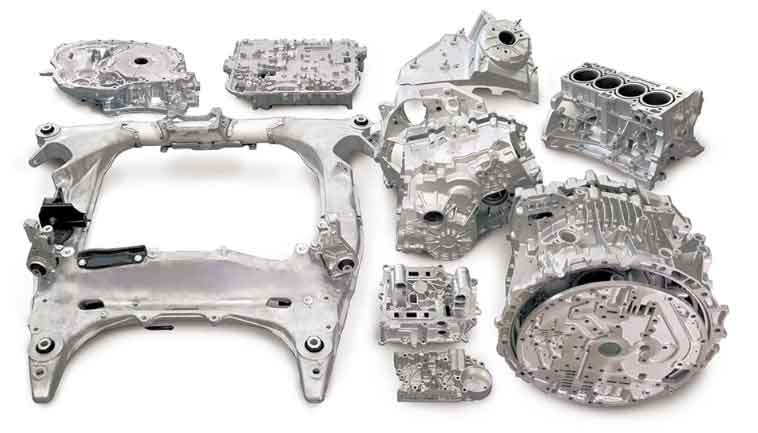
Die casting is a metal casting process that involves injecting molten metal into a mold cavity under high pressure. The molten metal is forced into the mold, filling it completely and taking the shape of the desired component. Once the metal solidifies, the mold is opened, and the solidified part, known as a casting, is removed. Here is a detailed overview of the die casting process:
- Mold Preparation: The die casting process begins with the preparation of the mold, which consists of two halves: the fixed half (known as the cover die) and the movable half (known as the ejector die). The mold is carefully machined to match the desired shape and features of the component.
- Molten Metal Preparation: The selected metal or alloy is melted in a furnace at temperatures suitable for its specific properties. The molten metal is carefully monitored to ensure it reaches the desired temperature and composition.
- Injection: The molten metal is injected into the mold cavity under high pressure. The injection system of the die casting machine consists of a cold chamber or a hot chamber. In the cold chamber system, the molten metal is transferred from the furnace to the machine’s shot chamber before being injected into the mold. In the hot chamber system, the shot chamber is connected directly to the furnace, allowing for a continuous supply of molten metal.
- Filling and Solidification: The high-pressure injection forces the molten metal to fill the entire cavity of the mold, ensuring that it replicates the shape and details of the component accurately. The metal quickly cools and solidifies as it comes into contact with the cool surface of the mold.
- Ejection: Once the metal has solidified and cooled sufficiently, the mold is opened, and the casting is ejected from the die using ejector pins or a mechanical ejection system. The casting is then separated from the sprue (the channel through which the molten metal entered the mold) and any excess material (known as flash) is removed.
- Trimming and Finishing: The casting may undergo further trimming and finishing operations to remove any remaining flash or excess material, improve dimensional accuracy, and achieve the desired surface finish. These operations can include grinding, sanding, deburring, or machining, depending on the requirements of the component.
- Heat Treatment and Surface Treatment: In some cases, heat treatment processes such as annealing, quenching, or tempering may be applied to enhance the mechanical properties of the casting. Surface treatments like painting, plating, or coating may also be applied to improve the component’s appearance, corrosion resistance, or other functional properties.
The die casting process offers several advantages, including high production efficiency, excellent dimensional accuracy, complex geometry capabilities, and superior surface finish. It is commonly used to produce a wide range of components for industries such as automotive, aerospace, electronics, and consumer goods. The process enables the production of high-quality, precise components with tight tolerances and intricate details.
